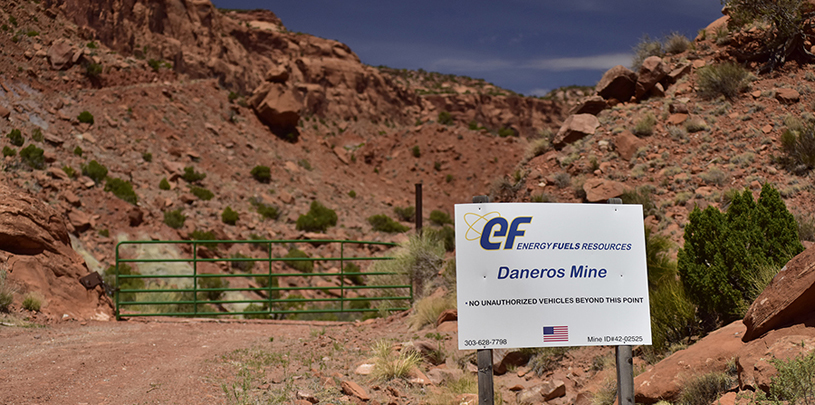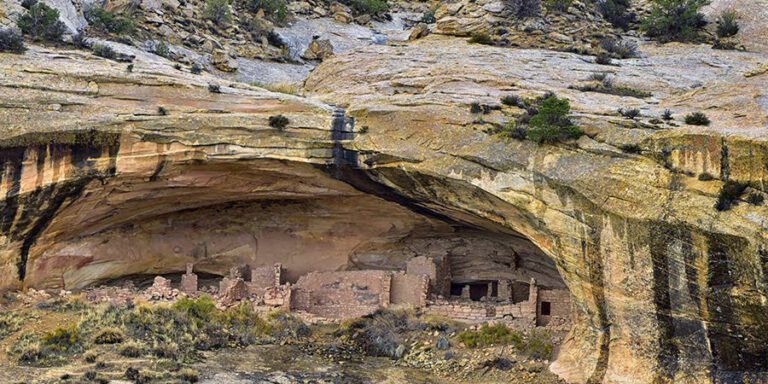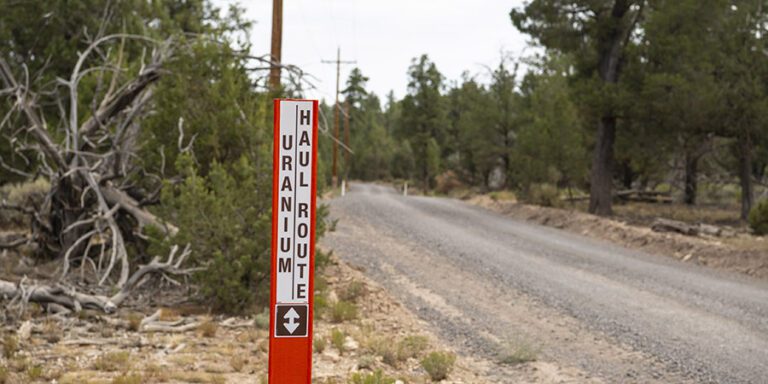
Challenging the Daneros Mine’s plans to expand uranium mining near Bears Ears National Monument.
The Grand Canyon Trust and the Southern Utah Wilderness Alliance have appealed a decision by the Bureau of Land Management (BLM) to allow a massive expansion of the contentious Daneros uranium mine on public lands on the doorstep of Bears Ears National Monument.
Back in February, the BLM gave the mine’s owner, Energy Fuels Resources (USA) Inc., the green light to expand the mine from 4.5 acres to 46 acres and truck up to half a million tons of uranium ore through Bears Ears National Monument to the company’s White Mesa uranium mill. We appealed, and filed a statement of reasons backing up our appeal on Friday, August 10, 2018.
We filed this appeal because we believe that the BLM did not take a hard look at the mine expansion’s potential impacts, and did not consider any alternatives other than keeping things as they are and the expansion as proposed by Energy Fuels. The BLM now has until mid-October to respond.
Why care about the Daneros Mine?
The wild landscape surrounding the Daneros Mine is too rich in cultural, historic, and scientific resources to imperil with more poisonous mining. The mine is located on lands proposed for national monument status by the Bears Ears Inter-Tribal Coalition in 2015, and it’s just three miles from Bears Ears National Monument as designated by President Obama in 2016.
Up to 15 truckloads of uranium ore per day
During busy periods, the mine could run nonstop, broadcasting dust and noise from exhaust fans, generators, trucks, and other activity, and sullying an especially dark night sky. Up to 15 truckloads of uranium ore each day would be driven along steep and narrow roads from the mine to the highway, then through the south side of Natural Bridges National Monument and through the Shash Jaa’ monument unit of the shrunken Bears Ears designated by President Trump in 2017.
Knowledge is power. Join our Action Alert Network and we’ll email you when there’s an opportunity to weigh in
The ore would be milled at the White Mesa uranium mill near the Ute Mountain Ute tribal community of White Mesa. The White Mesa Mill is already plagued with contamination that threatens the water, air, and public health of southeastern Utah, and this must be addressed before it is allowed to process any more toxic and radioactive material.
The Daneros Mine is currently mothballed, idled since 2012 when three reactor-core meltdowns at the Fukushima Daiichi Nuclear Power Plant put the nail in the coffin on already nosediving uranium prices. Though low uranium prices made the mine unprofitable, in 2013 Energy Fuels proposed expanding the footprint of the mine tenfold, boosting production from 100,000 tons to half a million tons of uranium ore, adding two new mine portals and numerous new ventilation shafts, and extending the life of the mine from seven to 20 years.
In February 2018, the BLM approved a modified plan of operations greenlighting all the company’s plans. Even if Energy Fuels decides not to resume mining, this approval could end up delaying the costly cleanup of the existing mine for two decades or more.
Taking a hard look at the Daneros Mine
Without adequately analyzing the mine expansion’s potential impacts, we believe the BLM violated federal law approving the expansion and concluding that the project would not have a significant environmental impact. We’re asking the BLM to comprehensively analyze the mine expansion’s impacts on surface water, groundwater, and other resources, in part by conducting a more in-depth environmental review known as an environmental impact statement. We also aim to prevent surface water and groundwater contamination by requiring stricter standards for cleaning up the mine and additional monitoring and response procedures to detect and mitigate potential contamination.
Native views on uranium
The Daneros Mine is within the ancestral lands of several tribes, including the Ute Mountain Ute, Hopi, and the Navajo Nation. Diné (Navajo) people know uranium from a traditional story. The creator gave them a choice between yellow corn pollen and yellowcake uranium dust. The Diné chose corn pollen, and it is a fundamental aspect of traditional culture to this day. The creator then warned the people that if uranium was disturbed, it would unleash destruction. The destruction came to pass, sickening many who worked in the mines and mills during the Cold War.
Radiation is particularly insidious because you can’t see it, smell it, or taste it, and yet it can be harmful to human health for a thousand generations or more. Instead of opening new and expanding old uranium mines, our society should be doing our best to clean up our toxic legacy for the thousand generations yet to be born. We’re working to make sure that this mine does not add to that legacy.





